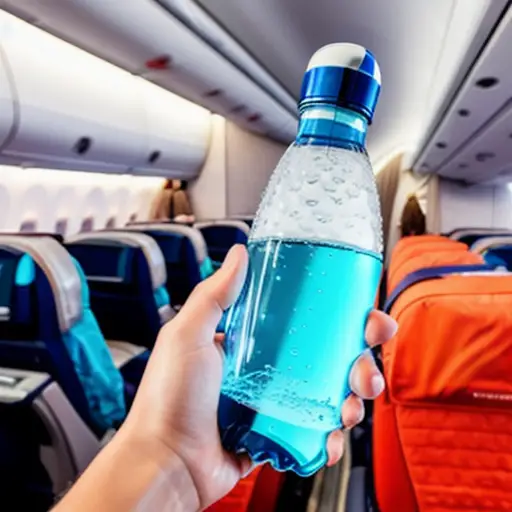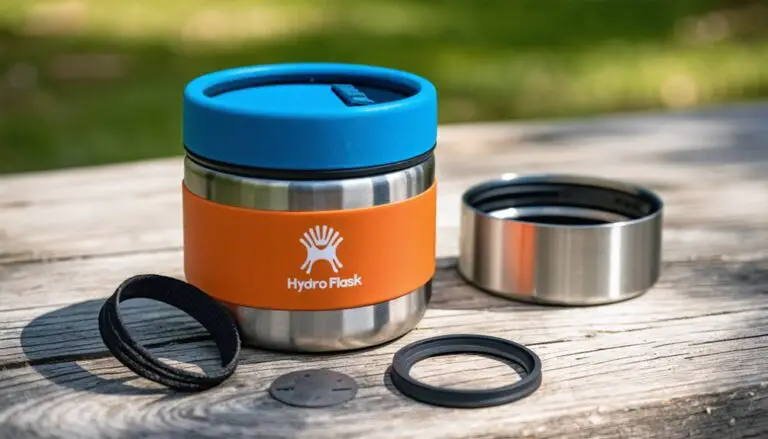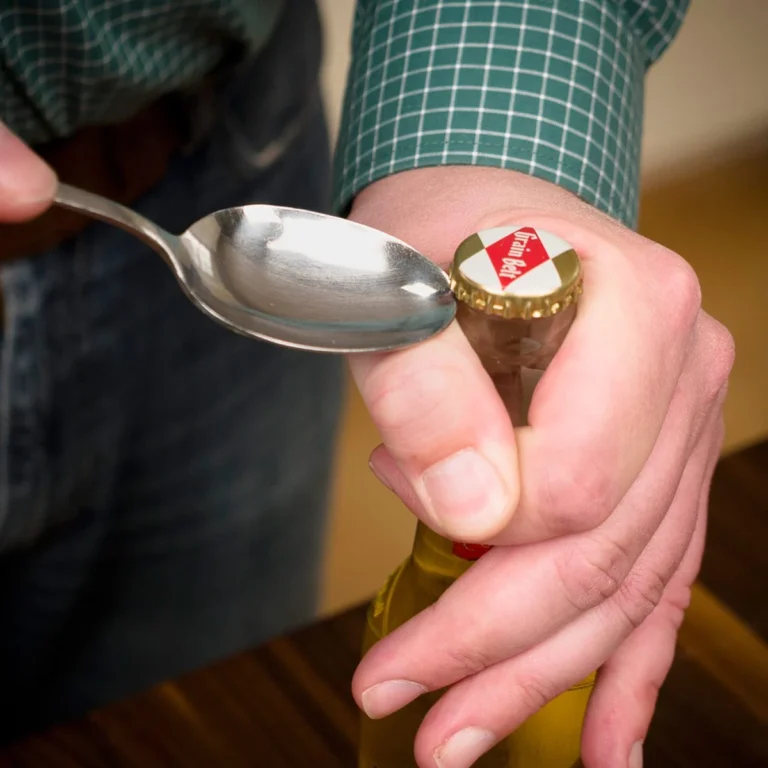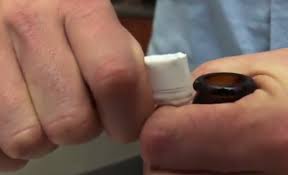Are water bottles allowed on international flights? This is a common question that many travelers have when preparing for their journey. In this blog post, we will provide you with the factual data and guidelines regarding bringing water bottles on a plane, specifically for international flights. Understanding the rules and regulations surrounding this topic will help you make informed decisions and ensure a smooth travel experience. So, let’s dive in and explore the ins and outs of bringing water bottles on international flights.
I. Understanding the regulations for carrying liquids on international flights
Understanding the regulations for carrying liquids on international flights
When it comes to carrying liquids on international flights, there are regulations and restrictions in place to ensure safety and security. Here are some key points to keep in mind:
- Overview of the regulations set by major international airlines: Different airlines may have varying rules on carrying liquids, so it’s important to check the specific guidelines of the airline you are flying with.
- Restrictions on the size and volume of liquid containers: Most airlines follow the “3-1-1 Rule,” which means that liquids must be stored in containers of 3.4 ounces (100 milliliters) or less, all containers must fit in a single, clear, quart-sized plastic bag, and each passenger is allowed one bag.
- TSA guidelines for carrying liquids on international flights: The Transportation Security Administration (TSA) provides detailed guidelines on carrying liquids in carry-on luggage. These guidelines apply to flights departing from the United States.
- ICAO regulations regarding liquids on international flights: The International Civil Aviation Organization (ICAO) sets global standards for aviation security. These regulations govern the transportation of liquids on international flights.
- Security measures implemented by ICAO: ICAO regulations include the screening of liquids at security checkpoints and the implementation of additional security measures to ensure the safety of passengers.
- Tips for packing liquids in carry-on luggage: Use travel-sized bottles and ensure they are properly sealed to prevent leaks. Be aware of exceptions for medications, baby formula, and dietary supplements.
- Variations in regulations between different countries and airports: It’s important to be aware that regulations may vary between countries and airports, so it’s advisable to check the specific guidelines of your destination.
- Tips for navigating security checks with liquids: To make the process smoother, be prepared by following the guidelines, removing the liquids from your bag for screening, and cooperating with security personnel.
By understanding the regulations and guidelines for carrying liquids on international flights, passengers can ensure a hassle-free and safe travel experience.
II. International Airline Regulations
Overview of the regulations set by major international airlines
When it comes to carrying liquids on international flights, it’s important to be aware of the regulations set by major airlines:
- Air France: Allows passengers to carry liquids in containers of up to 100ml (3.4oz) each. These containers must be placed in a transparent resealable plastic bag with a maximum capacity of 1 liter (1 quart). Each passenger is allowed one bag.
- Delta Air Lines: Follows the TSA’s 3-1-1 Rule, allowing passengers to carry liquids in containers of up to 100ml (3.4oz) each. These containers must be placed in a quart-sized bag.
- Qantas: Adheres to the same regulations as the TSA’s 3-1-1 Rule. Passengers are allowed to carry liquids in containers of up to 100ml (3.4oz) each, with a maximum of 1 liter (1 quart) per passenger.
- United Airlines: Follows the same guidelines as the TSA’s 3-1-1 Rule. Passengers can carry liquids in containers of up to 100ml (3.4oz) each, placed in a quart-sized bag.
It’s important to note that these regulations may vary slightly between airlines and countries. It’s always recommended to check the specific requirements of the airline you are flying with before your trip. Failure to comply with the regulations could result in items being confiscated at the security checkpoint.
Restrictions on the size and volume of liquid containers
When it comes to carrying liquids on international flights, there are certain restrictions on the size and volume of containers:
- 3-1-1 Rule: The Transportation Security Administration (TSA) in the United States follows the 3-1-1 rule, which allows passengers to carry liquids, gels, and aerosols in containers of 3.4 ounces (100 milliliters) or less. These containers must be placed in a clear, quart-sized bag, with one bag allowed per passenger.
- Exceptions: There are certain exceptions to the 3-1-1 rule for medications, baby formula, and dietary supplements. These items are allowed in larger quantities, but they may be subject to additional screening or may need to be declared at the security checkpoint.
- Variations: Different countries and airports may have their own regulations regarding liquids. It is important to check the specific requirements of the country you are departing from and the country you are traveling to, as well as any layover airports.
- Packing Tips: When packing liquids in carry-on luggage for international flights, it is advisable to use travel-sized bottles that comply with the maximum size limit. Make sure to seal the bottles properly to prevent any leakage during the flight.
- Navigating Security Checks: When going through security checks, it is recommended to place the quart-sized bag containing liquids in an easily accessible part of your carry-on luggage. This will help expedite the screening process and reduce any potential delays or inconvenience.
By understanding the restrictions and following the guidelines set by airlines and regulatory bodies, passengers can ensure a smooth and hassle-free experience when carrying liquids on international flights.
III. Transportation Security Administration (TSA) Guidelines
TSA guidelines for carrying liquids on international flights
The Transportation Security Administration (TSA) has specific guidelines in place regarding the transportation of liquids on international flights. These guidelines are designed to ensure the safety and security of passengers and aircraft. Here are some key points to keep in mind:
- The TSA follows the 3-1-1 Rule, which states that liquids must be in containers that are 3.4 ounces (100 milliliters) or less, and all containers must fit into a single quart-sized clear plastic bag.
- Each passenger is allowed one quart-sized bag of liquids, which must be placed in a separate bin during the screening process.
- Exceptions can be made for medications, baby formula, and dietary supplements, which can be carried in quantities greater than 3.4 ounces as long as they are declared for inspection.
Travelers should also keep the following tips in mind for hassle-free travel with liquids:
- Use travel-sized bottles that comply with the 3.4-ounce rule and ensure they are properly sealed to prevent leakage.
- Familiarize yourself with the specific regulations of the country and airport you are traveling to, as there may be variations in guidelines.
- Be prepared to declare and present any liquids that exceed the 3.4-ounce limit, or fall under the exceptions category, for additional screening.
By adhering to these guidelines and taking necessary precautions, passengers can ensure a smooth and efficient screening process when traveling with liquids on international flights.
3-1-1 Rule and exceptions
The 3-1-1 rule is a common guideline followed by the Transportation Security Administration (TSA) in the United States and many other countries’ aviation agencies. It specifies the restrictions on carrying liquids in carry-on baggage on international flights. According to the rule, liquid items must be placed in containers that are no larger than 3.4 ounces (100 milliliters) and stored in a clear, quart-sized plastic bag. Each passenger is allowed only one bag of liquids.
However, there are exceptions to the 3-1-1 rule. Some exceptions include:
- Medications: If you have prescription medications, you are allowed to carry them in larger quantities. Make sure to have the prescription label or a doctor’s note just in case it’s requested by the security personnel.
- Baby formula and breast milk: Passengers traveling with infants or young children are allowed to bring necessary amounts of baby formula, breast milk, or juice in carry-on baggage. It’s advisable to inform the security staff before going through the screening process.
- Special dietary items: Individuals with special dietary needs, such as liquid nutrition supplements or specialized food items, may carry them in reasonable quantities. It’s advisable to have supporting documentation, such as a doctor’s note.
It’s important to note that regardless of exceptions, all liquid items must still go through screening checkpoints and may be subject to additional security procedures. It’s always recommended to check the specific regulations of the airlines and airports you will be traveling with to ensure compliance with their rules and any additional restrictions they may have in place.
IV. International Civil Aviation Organization (ICAO) Regulations
ICAO regulations regarding liquids on international flights
The International Civil Aviation Organization (ICAO) sets regulations regarding liquids on international flights to ensure the safety and security of passengers. These regulations are implemented by airports and airlines worldwide. Here are some key points to keep in mind:
- 3-1-1 Rule: The ICAO follows the 3-1-1 rule, which allows passengers to carry liquids, gels, and aerosols in containers of 100 milliliters (3.4 ounces) or less.
- Exceptions: Certain items are exempt from the 3-1-1 rule, including medications, baby formula, and dietary supplements. However, these items may be subject to additional screening or documentation requirements.
- Declaration and Screening: Passengers are required to declare any liquids that exceed the 100 milliliter limit during the security screening process. These items may be subject to additional checks.
- Variations: It’s important to note that specific regulations may vary between countries and airports. Some airports may have stricter rules or additional restrictions in place.
To navigate security checks with liquids smoothly, here are some tips:
- Pack liquids in travel-sized bottles of 100 milliliters or less.
- Seal the bottles properly to prevent leakage.
- Keep all liquids in a clear, resealable plastic bag for easy inspection.
- Familiarize yourself with the regulations of the airports you will be traveling through to avoid any surprises.
By following these guidelines and being aware of the regulations, you can have a hassle-free travel experience with liquids on international flights.
Security measures implemented by ICAO
The International Civil Aviation Organization (ICAO) has implemented security measures to ensure the safety of passengers and crew on international flights:
- Screening Procedures: ICAO requires all liquids, aerosols, and gels to be screened before being allowed on board. This includes passing them through X-ray machines or other screening devices to detect any prohibited or dangerous substances.
- Sealed Bags: ICAO recommends that passengers place their liquids in transparent resealable bags to facilitate the screening process. This allows security personnel to quickly inspect the contents without having to handle each individual item.
- Quantity Limitations: ICAO adheres to the 3-1-1 rule, which allows passengers to carry liquids in containers of 100 milliliters (3.4 ounces) or less. These containers must fit into a single, transparent, resealable plastic bag with a maximum capacity of 1 liter (1 quart). Each passenger is limited to one bag.
- Exceptions: ICAO provides exceptions for medications, baby formula, and dietary supplements that may exceed the volume restrictions. These items may be subject to additional screening, declaration, or approval by airport security authorities.
It’s important for passengers to follow the regulations set by ICAO and the specific requirements of the airline they are traveling with to ensure a smooth and hassle-free journey.
V. Preparing for the Flight
Tips for packing liquids in carry-on luggage for international flights
When packing liquids in your carry-on luggage for international flights, it’s important to follow the regulations and make the process as hassle-free as possible:
- Use travel-sized bottles: To comply with the size restrictions, transfer your liquids into small containers, typically no more than 3.4 ounces (100 milliliters) in volume.
- Seal your bottles properly: Ensure that all containers are tightly sealed to prevent any leakage. Consider using travel-sized bottles with secure caps or placing them in sealed plastic bags for added protection.
- Exceptions for medications, baby formula, and dietary supplements: These items may be exempt from the usual size restrictions, but it’s advisable to check the specific guidelines of your airline and the countries you will be traveling to.
- Declare and screen any exempt items: If you are carrying exempt items, such as medicines or baby formula, be prepared to declare them at security checkpoints and have them screened separately if required.
- Be aware of variations in regulations: Regulations can vary between airlines and countries, so it’s essential to research and understand the specific requirements of your airline and destination beforehand.
- Navigate security checks efficiently: Place your liquids in an easily accessible location in your carry-on bag, as you may be required to remove them for separate screening. This will help streamline the security process.
By following these tips, you can ensure a smooth and hassle-free experience when packing liquids for your international flight.
Use of travel-sized bottles and sealing them properly
When it comes to packing liquids for international flights, it is important to comply with the regulations set by airlines and airport authorities. One way to ensure compliance is to use travel-sized bottles and seal them properly. Here are some tips to help you with this:
- Choose the right size: Most airlines have restrictions on the maximum volume of liquid containers that can be carried in carry-on luggage. Typically, these restrictions range from 100ml (3.4oz) to 150ml (5.07oz). Make sure to use travel-sized bottles that comply with these restrictions.
- Seal the bottles properly: To prevent any leakage or spills, it is important to seal the bottles properly. This can be done by ensuring that the lids are tightly closed and by placing the bottles in a clear, resealable plastic bag.
- Label the bottles: In case there are any questions or concerns during the security check, it is a good idea to label the bottles with the contents. This can help expedite the screening process and provide clarity to the security personnel.
- Consider investing in travel-sized toiletries: Instead of transferring liquids from larger bottles to travel-sized ones, consider purchasing travel-sized toiletries that come in compliance with airline regulations. This can save you time and effort in packing.
By following these tips and using travel-sized bottles, you can ensure a hassle-free experience while carrying liquids on international flights.
VI. Exceptions and Special Cases
Exceptions for medications, baby formula, and dietary supplements
When it comes to carrying liquids on international flights, there are exceptions for certain items such as medications, baby formula, and dietary supplements. These exceptions are in place to ensure the well-being and convenience of passengers. Here are some key points to keep in mind:
- Medications: Passengers are allowed to carry necessary medications in their carry-on luggage. It is recommended to carry them in their original packaging with clearly marked labels to avoid any confusion. It’s best to check with the airline or relevant authorities for any additional documentation that may be required for specific medications.
- Baby Formula: Passengers traveling with infants or young children are allowed to carry baby formula and necessary supplies. It is best to pack these items in reasonable quantities and be prepared for additional screening procedures. It is advisable to notify the airline in advance to avoid any inconvenience.
- Dietary Supplements: Passengers with specific dietary requirements or medical conditions may need to carry dietary supplements. It is recommended to carry them in their original packaging, clearly labeled, and in reasonable quantities.
- Sealing and Declaration: It is important to ensure proper sealing of liquid containers and comply with the 3-1-1 rule (limited to containers of 3.4 ounces or less, all fitting into a single quart-sized resealable bag). Additionally, certain items may need to be declared and screened separately, so it’s advisable to be prepared for such requirements.
It’s important to note that regulations may vary between different countries and airports, so it’s always a good idea to check with the relevant authorities or the airline before traveling. Following these guidelines can help ensure a hassle-free travel experience with liquids on international flights.
Requirements for declaring and screening such items
When traveling internationally, it is important to understand the requirements for declaring and screening certain items, especially when it comes to liquids. Different countries and airports may have variations in their regulations, so it is crucial to be familiar with the guidelines to ensure a hassle-free travel experience.
Here are some key points about declaring and screening liquids:
- Medications: Prescription medications, as well as over-the-counter medications, are generally allowed on international flights. It is advisable to carry them in their original packaging and declare them at the security checkpoint if necessary.
- Baby formula: Baby formula and milk for infants are usually allowed in reasonable quantities. It is recommended to inform the airline in advance and be prepared for additional screening at security checkpoints.
- Dietary supplements: Dietary supplements, such as vitamins or protein powders, may be subject to additional screening. It is advisable to carry them in their original packaging and declare them if required.
- Declaration forms: Some countries may require passengers to fill out declaration forms for certain items, including liquids. It is important to be aware of these requirements and comply with them to avoid any issues.
- Screening procedures: Liquids may be subject to additional screening measures at security checkpoints, such as X-ray scans or physical inspection. It is important to follow the instructions of security officers and cooperate during the screening process.
By being aware of the requirements for declaring and screening liquids and following the guidelines set by the airline and relevant authorities, travelers can ensure a smooth journey and avoid any unnecessary delays or complications.
VII. Other Considerations
Variations in regulations between different countries and airports
Variations in regulations between different countries and airports
When it comes to carrying liquids on international flights, it’s important to note that regulations can vary between different countries and airports. While there are general guidelines set by international organizations like the International Civil Aviation Organization (ICAO), individual countries and airports may have additional restrictions or requirements. Here are a few things to keep in mind:
- Limits on liquid volume: The ICAO sets a limit of 100ml (3.4 ounces) for each container of liquid carried in hand luggage. However, some countries may have stricter limits or additional restrictions, so it’s important to check the specific regulations of your destination country.
- Duty-free purchases: Liquids purchased in duty-free shops are generally allowed on board, but they must be packed in a security tamper-evident bag with the receipt visible. However, some countries or airports may have specific rules regarding duty-free liquids, so it’s advisable to check the regulations beforehand.
- Transfer flights: If you have a transfer flight in a different country, you may need to adhere to the regulations of both the departure and transfer airports. This means that even if your liquids were allowed on the first leg of your journey, they may be subject to additional restrictions during the transfer.
- Travel restrictions: It’s important to stay updated on any travel restrictions or security measures implemented by the authorities of your destination country. These can vary depending on factors such as the current security situation or health concerns.
To ensure a hassle-free travel experience, it’s always recommended to check the regulations of your specific destination and any transit airports before packing your liquids. This will help you avoid any surprises or inconveniences at security checkpoints.
Navigating security checks with liquids can be a bit challenging, but with the right preparation and knowledge, you can ensure a hassle-free experience:
- Follow the 3-1-1 Rule: Familiarize yourself with the Transportation Security Administration’s (TSA) 3-1-1 rule, which states that liquids must be in containers of 3.4 ounces (100 milliliters) or less, all containers must fit into a single quart-sized, clear plastic bag, and each passenger is allowed one bag.
- Separate liquids from your carry-on baggage: Place your liquids bag in a separate tray during the security screening process to facilitate inspection.
- Declare any necessary exemptions: If you are carrying medical necessities, baby formula, or dietary supplements that exceed the 3.4-ounce limit, declare them separately at the security checkpoint and be prepared to provide any necessary documentation.
- Seal travel-sized bottles properly: Make sure all liquid containers are tightly closed and securely sealed to prevent spills during the flight.
- Be prepared for additional screening: In some cases, security officers may need to perform additional screening on your liquids or request additional information, so be patient and cooperative.
- Stay informed of variations in regulations: Regulations regarding liquids may vary between countries and airports, so it’s important to research and stay updated on any specific rules or restrictions that may apply to your destination.
By following these tips, you can ensure a smooth experience when navigating security checks with liquids during international flights.
Tips for hassle-free travel with liquids
Here are some tips to ensure hassle-free travel with liquids on international flights:
- Pack liquids properly: Place liquid containers in a clear, resealable plastic bag and separate them from your other belongings to facilitate easy screening at security checkpoints.
- Use travel-sized bottles: Opt for travel-sized containers that comply with the maximum volume limit (usually 3.4 ounces or 100 milliliters) set by most airlines. These containers are readily available at most drugstores and travel supply stores.
- Seal containers properly: Ensure that all bottles are tightly sealed to prevent leakage. Consider using travel containers with secure lids or transfer liquids into spill-proof bottles.
- Follow the 3-1-1 rule: Adhere to the Transportation Security Administration (TSA) 3-1-1 rule, which allows you to carry liquids, gels, and aerosols in containers of 3.4 ounces (100 milliliters) or less, with all containers fitting into a single quart-sized clear plastic bag.
- Keep medication separate: If you have essential medications that exceed the volume limit, keep them separate from other liquids in a clear plastic bag. Bringing a doctor’s prescription or a medical certificate can help streamline security checks.
- Declare special items: If you are carrying baby formula, breast milk, or dietary supplements, alert the security personnel and comply with any additional screening requirements.
- Research country-specific regulations: Different countries and airports may have varying regulations on carrying liquids, so it’s essential to familiarize yourself with the rules for your specific destination.
By following these tips, you can navigate security checks smoothly and ensure a hassle-free travel experience with liquids on international flights.




